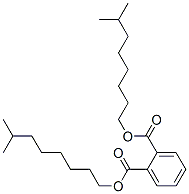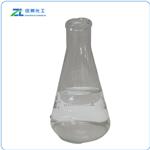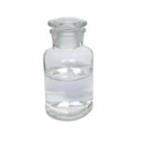Chemical Properties
The empirical formula of diisononyl phthalate (DINP) is
C26H42O4. The structural formula of DINP varies because the
iso-alcohols used in the manufacture contain several isomers.
DINP is a clear, colorless to light yellow liquid. DINP is insoluble in water, but it is
soluble in organic solvents.
Uses
Its major
use is as a plasticizer.
Uses
Diisononyl Phthalate is a general-purpose plasticizer for polyvinyl chloride.
Production Methods
DINP is manufactured by the reaction of phthalic anhydride
with isononanol in the presence of an acid catalyst.
Flammability and Explosibility
Non flammable
Carcinogenicity
As stated, there have been two
carcinogenesis studies in F344 rats and one in
B6C3F1 mice. An increased incidence of hepatocellular
neoplasms (i.e., adenomas and carcinomas) is observed in
both rats and mice. An increased incidence of renal cell
carcinomas and mononuclear cell leukemia has also been
described. These studies establish that at dose levels of
approximately 600 mg/kg/day, DINP can induce hepatocellular
carcinoma in rats and mice. As there was evidence of
peroxisomal proliferation at the carcinogenic doses in both
species, it seems most likely that this was the mechanism for
hepatocellular carcinoma induction. The renal cell
carcinomas observed in the male rats were associated with
the induction of α 2u-globulin, indicating that it was a
sex- and species-specific effect. Kidney tumors that are the
consequence of α 2u-globulin induction are not considered to
be clinically relevant to humans.MNCL is a tumor type
that occurs spontaneously at a high and variable frequency in
F344 rats. Because there is no human equivalent, MNCL is
not considered to be relevant to humans.



